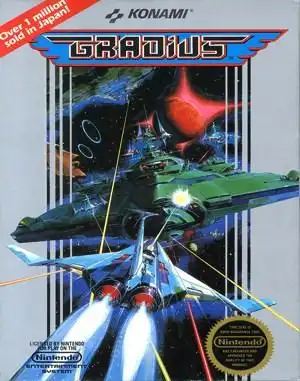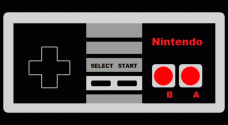Remember the days when arcade cabinets glowed with the promise of alien blasting and impossible scores? Among the pantheon of classic shoot 'em ups, few names resonate as strongly as Gradius. Konami's 1985 masterpiece didn't just throw waves of enemies at you; it introduced a strategic layer that felt revolutionary at the time, forever changing how players thought about upgrading their ship mid-flight.
Stepping into the cockpit of the legendary Vic Viper felt like a rite of passage for many retro gamers. This wasn't a game where power-ups simply dropped randomly; Gradius presented you with a unique power-up bar at the bottom of the screen, giving players agency over their ship's loadout. Collecting orange capsules would advance a cursor along this bar, letting you choose your next upgrade from options like Speed Up, Missile, Double, Laser, Option (the iconic orbiting helpers), and Shield.
The Iconic Power-Up System: A Game Changer
The power-up bar wasn't just a neat gimmick; it was the heart of Gradius's strategy. Do you prioritize speed to dodge bullets? Go for firepower with Laser or Double? Or build up Options for maximum coverage? Each choice mattered, especially since losing a life meant losing all your carefully selected upgrades, sending you back to a vulnerable state often far from where you perished. This brutal penalty amplified the tension and made every capsule collection a critical decision.
This system was a significant departure from the random drops common in other shooters and influenced countless games that followed. It demanded not just twitch reflexes but forward planning – knowing which upgrades you needed for the upcoming section or boss was crucial.
Stages of Legend: From Volcanic Moons to Moai Heads
Gradius whisked players across a variety of imaginative, often hostile, environments. You'd navigate fiery volcanic tunnels, navigate treacherous asteroid fields, and confront giant, screen-filling bosses often requiring you to chip away at vulnerable blue cores while dodging intricate bullet patterns.
But perhaps the most instantly recognizable stage, and one that became a series staple, was the Moai level. Giant, stone heads spitting deadly rings of energy added a bizarre, memorable touch inspired partly by Namco's Xevious and the mysterious Easter Island statues. It was unexpected, challenging, and solidified Gradius's unique visual identity.
A Legacy of Difficulty (and Cheats!): The Konami Code
Let's be honest: Gradius was tough. Really, really tough. Its relentless difficulty, coupled with the punishing power-up system, made completing the game a significant achievement. The arcade original was notoriously difficult, and while some home ports adjusted this slightly, the challenge remained a core part of the experience.
It was this difficulty that famously led to one of gaming's most enduring secrets. The NES port of Gradius, facing hardware limitations that made the game even harder in places (like simplified Moai stage scrolling and fewer Options), included a lifeline. By pausing the game and entering Up, Up, Down, Down, Left, Right, Left, Right, B, A, players could instantly get a full suite of power-ups. This simple sequence, initially a developer cheat, became the legendary Konami Code, a universal symbol of gaming secrets and a staple in countless Konami titles thereafter. Its origin story is forever tied to the challenge of Gradius.
Beyond the Arcade: Gradius Across the Eras
While the arcade version set the standard, Gradius saw life on numerous home platforms, each with its own quirks. The NES version introduced the Konami Code and was many players' first experience. The MSX port offered exclusive stages and features. The PC Engine version was closer to the arcade. It even landed on computers like the ZX Spectrum, Commodore 64, and PC-8801 under the name Nemesis.
The game's success spawned a long and beloved series, including Salamander, Gradius III, IV, V, and various spin-offs and remakes. Today, you can revisit the original classic through modern collections like the Konami Arcade Classics Anniversary Collection, available on platforms like Steam, Switch, and PS4, or via digital storefronts like Arcade Archives on PS4 and Switch, allowing new generations to experience the thrill of piloting the Vic Viper.
Why Gradius Still Matters Today
Gradius wasn't just another side-scrolling shooter; it was a pioneer. Its power-up system added strategic depth, its stages were iconic, its difficulty legendary, and it birthed the Konami Code. It laid the groundwork for an entire franchise and influenced the shmup genre for decades. Playing Gradius today is a trip back to a time when arcade games demanded mastery and home ports brought arcade magic into our living rooms. It remains a testament to Konami's early brilliance and a beloved classic for anyone who remembers the golden age of gaming.
Frequently Asked Questions (FAQ)
Q: What is the Konami Code and where did it come from?
A: The Konami Code is Up, Up, Down, Down, Left, Right, Left, Right, B, A. It originated in the NES port of Gradius as a cheat to give players power-ups due to the game's high difficulty.
Q: What is the Vic Viper? A: The Vic Viper is the name of the player's spaceship in the Gradius series. It's an iconic vessel in shmup history.
Q: Is the original Gradius available on modern platforms? A: Yes, the arcade version of Gradius is available digitally on platforms like PlayStation 4 and Nintendo Switch via the Arcade Archives series, and is also included in the Konami Arcade Classics Anniversary Collection available on multiple modern platforms.
Q: What makes the Gradius power-up system unique? A: Instead of random drops, collecting capsules advances a cursor on a menu bar at the bottom of the screen. Pressing a button selects the highlighted power-up (like Speed Up, Laser, Option), allowing players strategic choice in building their ship's abilities.


